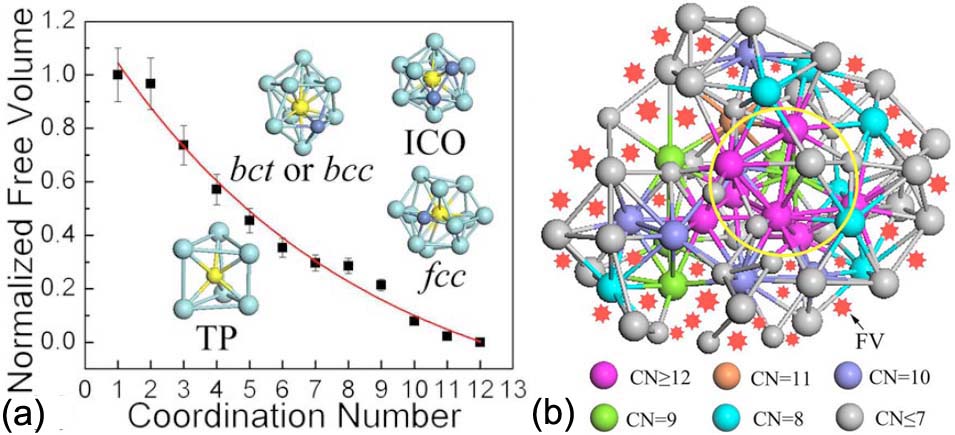=================================================================================
Liu et al. [1] proposed that the atomic structure of Zr2Ni metallic glass is essentially an association of ordered clusters and FV (free volume). The ordered clusters in size of ~ 1.5 nm consist of a densely packed core (i.e. icosahedral or fcc-type packing) and are surrounded loosely by large FV.
Figure 1695 (a) shows the CN (coordination number) dependence on the FV (free volume) in the Zr2Ni metallic glass (MG). FV increases statistically with decrease of the CN even although the FV is also related to other factors, e.g. atomic size. On the other hand, the atomic configuration of SROs (short range orderings) strongly depends on the CN. In the case of the Zr2Ni MG, the configuration with CN=12 is icosahedral (ICO) or face-centered-cubic (fcc) type SRO with no FV, CN=10 the body-centered-cubic (bcc) or body-centered tetragonal (bct) type, and CN=6 the trigonal prism (TP) as indicated by the insets. Figure 1695 (b) shows a representative ~1.5 nm cluster (including 64 atoms) taken from a densely packed region. The CN decreases gradually from the interior to the exterior area while the FV increases. The red octagons show schematically the distribution of the FV. The yellow circle reveals the core area with no FV.

Figure 1695. (a) The CN (coordination number) dependence on the FV (free volume) in Zr2Ni metallic glass (MG), and (b) Example of CN and FV distributions. Adapted from [1]
[1] X. J. Liu, G. L. Chen, X. Hui, T. Liu, and Z. P. Lu, Ordered clusters and free volume in a Zr–Ni metallic glass, Appl Phys Lett, 93, 011911 (2008).
|
